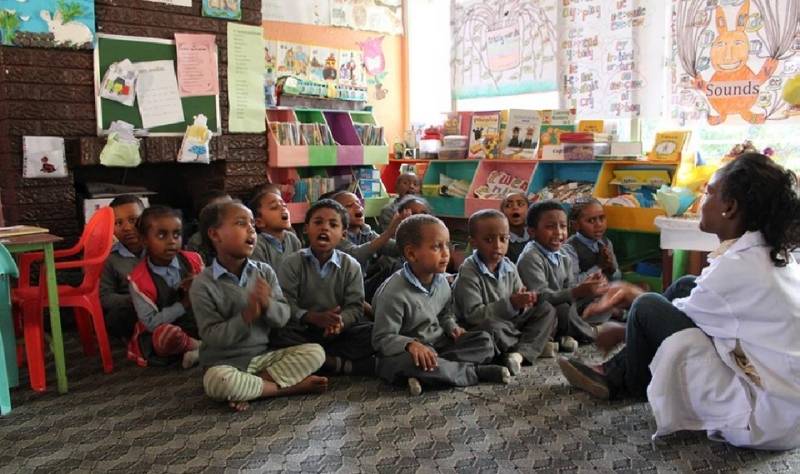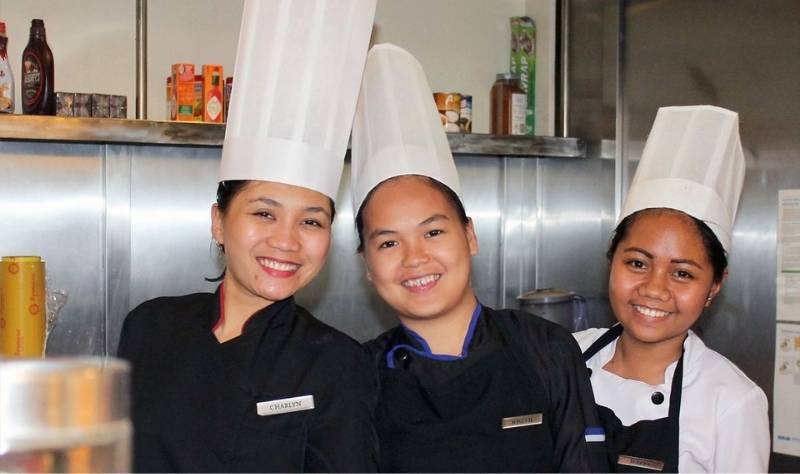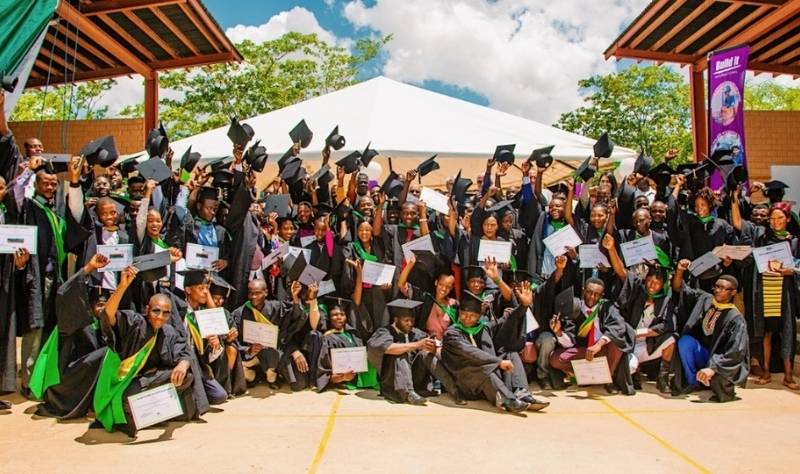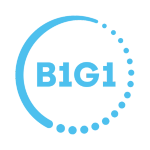Education - A Story of Ripple Effects
The typical definition of education is ‘the process of receiving or giving systematic instruction, especially at a school or university.’ However, when digging a bit deeper, education can also be described as ‘an enlightening experience’ – an experience that is not bound to any institution but a universal act of empowerment.
Nonetheless, even today, 39% of the poor worldwide have no formal education at all. Difficult financial conditions force them to put work above their own development and therefore limiting their chances to ever break the poverty circle. The lack of education doesn’t only have a negative impact on each individual, but it also has detrimental effects on the general economic growth of the country.

Developing and fostering the abilities of people has a positive spill-over effect on the country’s ability to innovate, as well as to imitate and adopt new technologies and to be part of technological progress. According to a report from UNESCO, each additional year of schooling raises the average annual gross domestic product (GDP) growth by 0.37%. A country that shows progressing economic growth can then invest in its own country and its own people uplifting the entire community. Call it the power of small, a ripple effect or something entirely different – the positive effects of education are clearly visible. And so are the effects when education is not a given, when education is not an option for everyone, when a significant part of the worldwide population is left behind.
Thankfully, there are many extraordinary organisations all over the world playing a part to mitigate the problem. Their aim is to create enlightening experiences for people who otherwise might not have the opportunity to take the step out of poverty towards greater empowerment. These organisations offer support to the individual, the entire community and the as a result, the country.
When returning back to the definition of education from the beginning, it might seem as if education is reserved for the young. While (early) childhood education is the cornerstone of education, secondary and vocational education and even adult skills training ensure that nobody gets left behind even if they did not have a great start at the beginning of their educational path.
(EARLY) CHILDHOOD EDUCATION – PREPARING FOR A PATH FULL OF POSSIBILITIES
Starting education at a young age is a valuable and crucial base for all further education. And although the world community made huge investments in primary education and illiteracy rates are dropping, we are still talking about millions of people above the age of 15 without any formal education (see graph below). According to UNICEF, around 150 million children are engaged in child-labour worldwide. In the world’s poorest countries, nearly one in four children are engaged in work that is potentially harmful to their health.

The advantages of early childhood education are numerous and we are not only talking about the basic skills of reading and writing. Children have a natural thirst for knowledge and learning, and education can not only help to satisfy and develop this thirst but also give them a different perspective of the world.
Education is a tool that enables individuals to create, innovate, build, maintain a brighter future for everyone.
The St. Yared school in Ethiopia which is run by the Hope for Children Organisation Australia knows a thing or two about the ripple effect of education. In Ethiopia, 49% of the population above the age of 15 is illiterate – that makes up 30% of the entire population.
However, Hope For Children’s goal is not to simply provide basic education to the children, but to approach it holistically, ensuring education is a part of the community. Education does not only mean teaching children in rote learning. They aim to provide quality education including digital training, English language skills and a focus on independent and critical thinking, crucial for building a future in the 21st century.

VOCATIONAL TRAINING FOR YOUNG ADULTS – PAVING A WAY OUT OF POVERTY
The graph above showed that despite worldwide investments, the numbers are still worrying. Imagine what the numbers might look like for secondary education, an area that does not receive as much international attention. Secondary education, may it be in school or through vocational training is something that seems unreachable in many parts of the world – especially for girls.
According to a report of the UNESCO, girls are almost two and a half times more likely to be out of school if they live in conflict-affected countries, and young women are nearly 90% more likely to be out of secondary school than their counterparts in countries not affected by conflict. A study from 2018 on the missed opportunities of not educating girls shows that globally, 9 in 10 girls complete their primary education, but only 3 in 4 complete their lower secondary education. In low-income countries, less than two-thirds of girls complete their primary education, and only 1 in 3 completes lower secondary school.
While primary education is the foundation, secondary education or vocational training enables young adolescents to find a way into the job market which provides them with the opportunity to lead an independent and empowered life. A report on the global impact of child marriage from 2017 states that each year of secondary education reduces the likelihood of marrying as a child before the age of 18 by five percentage points or more.

In the Philippines, 55% of the population live in rural areas of which 40% are reported to live below the poverty line. Sending their children to school, let alone completing an education themselves is very often out of the question. The Wonder Foundation in collaboration with the Foundation for Professional Training Incorporated (FTPI) sees those issues and aims to provide not only education but a brighter future as well. They offer vocational training in the hospitality and culinary sector to girls and young adults. These trainings are set up in a way that the girls are partly in school and partly in the industry, which gives them the necessary skills for future employment. The success rate of this project proves them right, with an average of 98% of their graduates landing a job.

Most of us know the feeling of getting our first job after graduation – we feel empowered and ready to take on the world. Imagine how those girls must’ve felt as they began their path into a brighter future! And it doesn’t stop there. Their employment has a real impact on their family as well, enabling them to fund the education of younger family members and can even help to lift her relatives out of poverty. Here, education is not only receiving instruction, but it is also receiving empowerment.
SKILL DEVELOPMENT FOR ADULTS – BUILDING AN OWN FUTURE
Worldwide, 172 million people were unemployed in 2018, which is about 5%, the lowest rate since the economic crisis in 2008. As promising as it sounds, a report from the International Labour Organisation finds that a majority of the 3.3 billion people employed throughout the world, though, are working under poor conditions that do not guarantee them a decent living. And this does not even take the unofficial number of unemployed people all around the world into account. Working conditions can be tough and even though the global community has shed a lot of light on the precarious conditions under which some of our beloved products are being produced, we are not there yet. However, people with no or very little education mostly don’t have much of a choice – sadly.
Skill Development for adults can help to create such a choice. As the wise Roy Bennett once said,
There are five important things for living a successful and fulfilling life: never stop dreaming, never stop believing, never give up, never stop trying, and never stop learning.
The women in Zambia supported by Build It International are also building their future (literally!) 60% of people in Zambia live below the poverty line and those rates are highest for female-headed households. The literacy rate is only at 55.3% with a much higher illiteracy rate among women. Craftsmanship or rather craftswomenship, in this case, can provide opportunities for women, even if they fall in the latter category. They receive construction training and work experience and even certification in bricklaying, painting or carpentry. A solid base for earning their own living and supporting their families. And above all, it offers them a chance to be independent!

Thinking even further, those bricklaying, painting or carpentry skills are a valuable asset for every community. Not only are they useful for building houses but they can be passed on to the future generation too. Students become teachers.
Education is the premise of progress, in every society, in every family.” Kofi Annan
Education comes in many shapes and colours: school, vocational training or a skill program. It creates value for children, adolescents and adults and it rarely stops with that one person. Knowledge gets passed on; jobs are created; families are supported. It holds the power to empower people and to pave the way for a brighter future ahead for them and future generations to come.
Click here to view education projects in B1G1.
